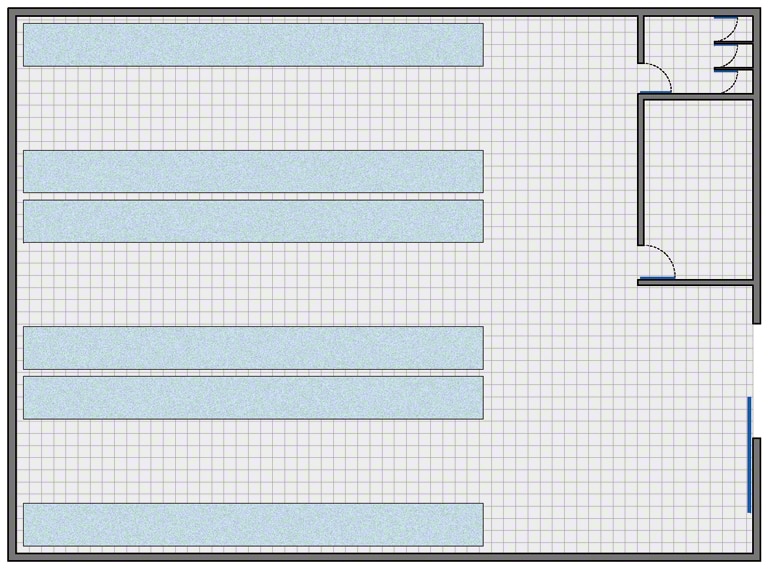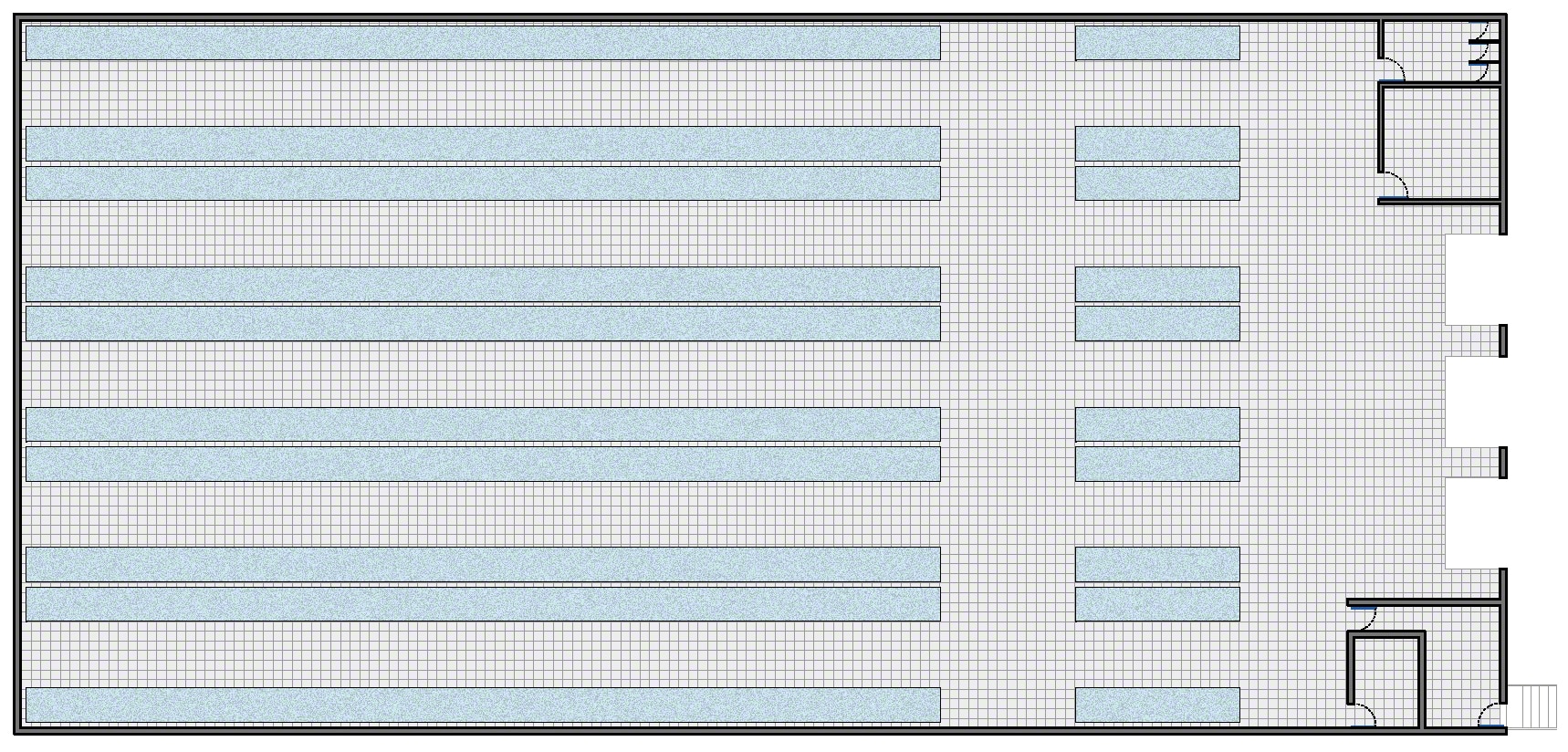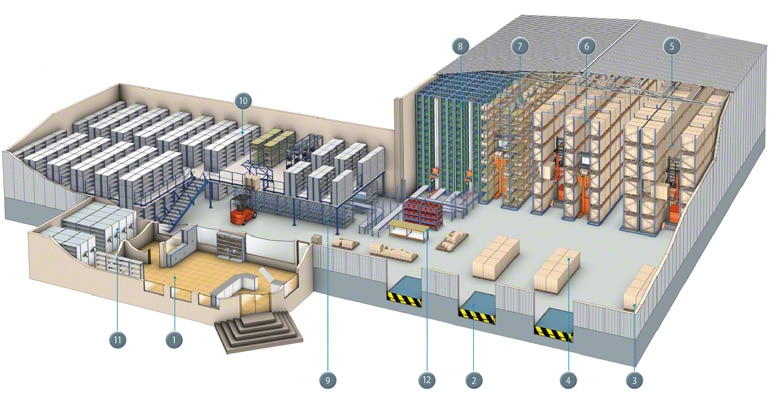Warehouse management
Good warehouse management means the location and flow of the goods is streamlined. The target is to achieve the highest possible throughput.
A warehouse is a facility that, along with storage racks, handling equipment and personnel and management resources, allows us to control the differences between the incoming flow of goods (received from suppliers, production centres, etc.) and the outgoing flow of goods (goods being sent to production, sales, etc.). Usually, these flows are not coordinated, and this is one of the reasons why it is important to have storage facilities.

Logistics warehouse for refrigerated and frozen food products
Types of warehouses
At times, the business activity of a company requires one or more types of storage facilities: one for raw materials, one for semi-finished products, one for finished products, etc. All of these have to be arranged on the basis of their specific operational needs, and in accordance with the restrictions and potential of each location and its surroundings.
The best way to classify the different types of warehouses currently available is to group them according to their common features:
The main tasks performed in a warehouse are:
A number of factors must be taken into account when planning a facility. The most important of these are the products to be stored, the flow of materials or goods, the space available to house them, the storage equipment—such as racks and handling equipment—, the human factor (personnel), and the company’s management system and policies.
Based on the above, a series of information must be collected. This information, which is stipulated below, will in turn influence the various aspects of the facility and must be taken into account during its development.
The simplest warehouses normally have access doors, an open area for maneuvering and verification, a storage area where the goods are located, a managent office for controlling operations, and toilets and changing rooms for personnel.

Warehouse with a very simple configuration: storage area, management area, changing rooms and bathrooms for personnel.
Starting with the simplest configuration, other areas can be added. This includes areas for reception, packaging and consolidation, dispatch, recharging forklift batteries, as well as loading docks. For example:

Warehouse with areas added for receptions, packaging, consolidation and dispatches.
Loading dock distribution at a warehouse facility.
In turn, a warehouse can be divided into sectors according to the product being handled or the work operations. The following diagram illustrates an example of this type of organisation:
1. Office and customer services.
2. Loading and unloading docks.
3. Reception and verification.
4. Dispatch.
5. Warehouse for high turnover or over-sized product.
6. High turnover picking off pallets.
7. Warehouse for odd-shaped products.
8. Warehouse for medium turnover components.
9. Warehouse for high turnover components.
10. Warehouse for low turnover components.
11. Warehouse for high-value products.
12. Packaging and consolidation.

A map of how different warehouse operations can be organised.

A central warehouse that produces and distributes frozen dough products for the food sector.
The space assigned to each area must be suitable, given the size of the land or building, the desired capacity, the operations that need to be performed, the required personnel and resources, the flow of materials, and the growth potential.
In any event, the customisation of the project and the design of areas within the installation will be determined by an in-depth study of the company’s needs—through the previously mentioned questions—and the supplier’s experience in implementing logistics and storage solutions.
The entire building—its shape, contents, and access points—must be in keeping with the specific needs of the customer. Opportunities for growth must also be taken into account. Building a warehouse that only meets current requirements and leaves no room for expansion would be a mistake, unless it is a temporary installation or one that will not experience growth.
Good warehouse management means the location and flow of the goods is streamlined. The target is to achieve the highest possible throughput.
A central warehouse issues the products it houses for general use, almost exclusively, to supply other local or regional warehouses.
A warehouse should fulfil different functions, such as product reception, its storage, management operations and inventory, or order prep.
Calculating the ROI consists of deducing the approximate time it will take to get back the initial investment made in a storage installation.
A warehouse management system (WMS) is essential for optimal warehouse management. Among its most important functions are the control of entries and stock.
Studying where to locate a warehouse should include an analysis of four basic factors: production, demand, costs and competitors.
Here, it analyses key aspects like fire risks, their prevention, reducing their impact and the safe distribution of the loads in warehouses.
A unit load is the basic storage and transport unit placed on or in a modular support (box, pallet, container, etc.), to streamline load handling.
Bar codes or RFID coding permits the identification of all items managed in warehouse fulfilment processes via laser bar code readers and radio scanners.
Radiofrequency identification (RFID) systems are the most efficient method to communicate orders assigned by the management system to operators, and to also receive the information sent by them.